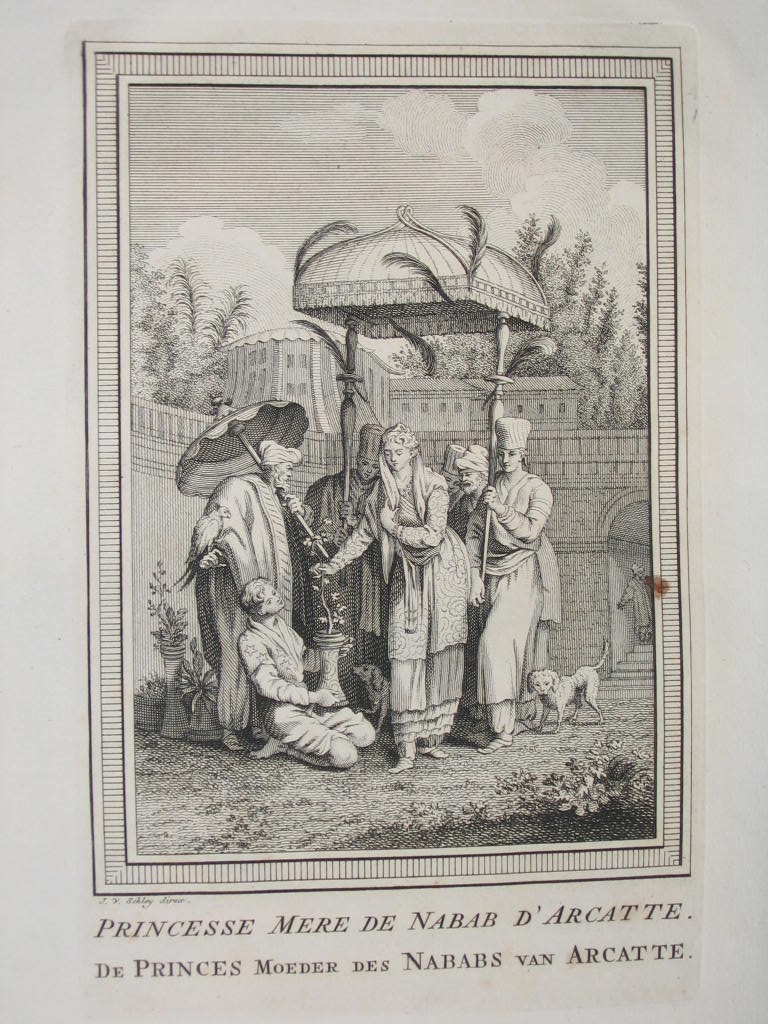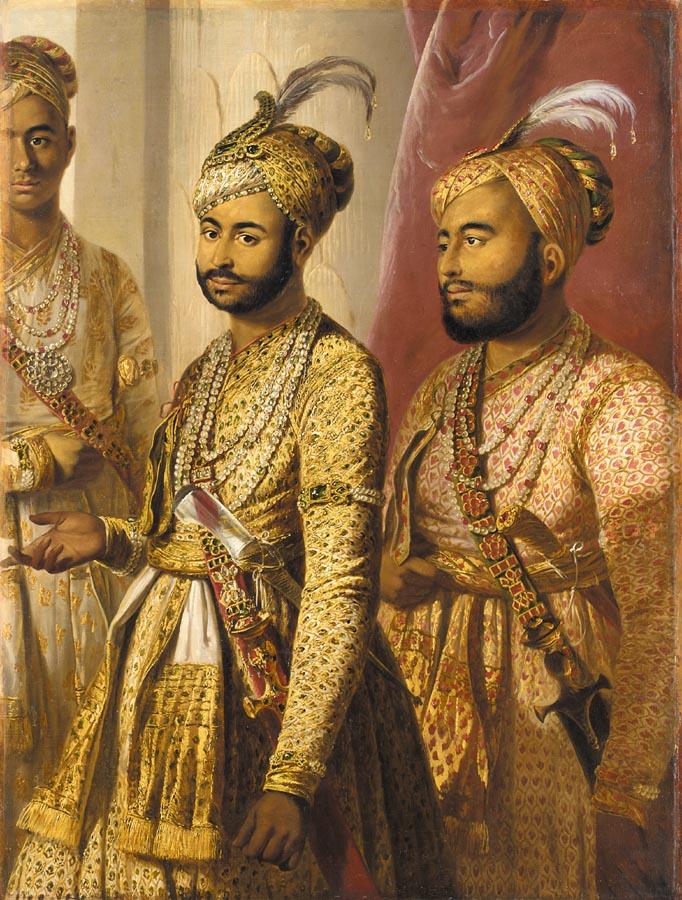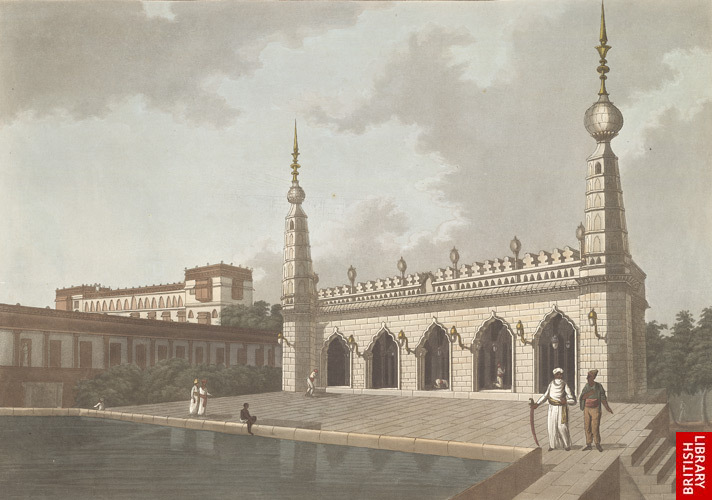

Source: ebay, June 2008

A few princes, like these sons of the Nawab of Arcot, were painted by the popular artist Tilly Kettle (c.1770)
Source:
http://search.sothebys.com/jsps/live/lot/LotDetail.jsp?lot_id=4FGKN
(downloaded May 2005)
"A PORTRAIT OF UMDAT AL-UMARA AND AMIR AL-UMARA, SONS OF NAWAB MUHAMMAD ALI KHAN OF ARCOT AND THE CARNATIC, TILLY KETTLE (1734/5-1786), ENGLISH SCHOOL, INDIA, CIRCA 1770; 127 by 96.5cm.; oil on canvas.
PROVENANCE
Charles Bourchier, Governor of Madras, 1770. By descent to his
grandson,
Captain Charles Bourchier, circa 1867-69
CATALOGUE NOTE: Tilly Kettle was the first distinguished artist to travel to India and capture the people and places of the Raj on canvas. Whilst his distinctive, clear, yet warmly sensitive style of portraiture may not have been fashionable amongst the haut ton of London, his manner of painting was supremely suited to the British military figures and Indian nawabs whose patronage he enjoyed in India, where he was held in singularly high esteem (Archer 1979, p.67).
Kettle petitioned the East India Company for leave to practice in India in 1768, and arrived in Madras in June of 1769. It was here at his first port of call that Kettle settled until 1771, painting numerous portraits and interesting street scenes (Archer 1979, p.67). His immediate success with the British residents of Madras may have been what prompted the Anglophile Nawab of Arcot, Muhammad Ali Khan, to call upon his services as an artist (Archer 1979, p. 69; a reproduction of a portrait of the Nawab of Arcot by George Willison, 1777, can be seen as a detail to lot 83 in this sale).
The Nawab himself was a lover of luxury, and his hedonistic lifestyle led him into increasing debt. Flagrantly irresponsible loans were always forthcoming from the British, augmenting the Nawab's already heavy debts enduring from the Carnatic wars. Muhammad Ali, however, was not concerned by his dire economic situation and continued to live and entertain in the lavish style to which he was accustomed. He was deeply admired by the British, who came to feel great affection for the mercurial Nawab. As time passed he assumed an increasingly English existence, adopting English manners and customs. He bought English oak and mahogany furniture from Britain, took breakfast and tea seated on chairs around a table, and themed the nuptials of his sons as a typical English wedding (Archer 1979, p.54-55). Despite the Nawab's increasing 'Britishness', correspondence came to light after his death that implicated him and his sons, including Umdat al-Umara and Amir al-Umara, in treacherous correspondence with Tipu Sultan; proving his worth as a wily politician but sadly causing his heir to be removed from power, and the British to assume responsibility for the Carnatic.
Muhammad Ali commissioned a monumental portrait from Tilly Kettle of himself and his five sons for presentation to the Governor of Madras, Charles Bourchier, on his retirement (Archer 1979, p.70). The family portrait was exhibited at the Royal Society of Artists in 1771, and was the first oil painting of an Indian ruler to be shown in London. The painting remained in London with the Bourchiers until 1869 when it was cleaned and cut down, removing the sons. The reduced painting was photographed in 1925 in the collection of Bourchier's descendent, Captain Claud Strachey Clitherow. Sadly, there are no further records of any of the fragments, and there is no information as to their current situation (Archer 1979, p.438, no.6). However, it is highly likely that the present painting which includes portraits of the Nawab's sons, including his favoured second son Amir al-Umara, is a missing section from this majestic family portrait. The painting is a tour de force of decorative realism, and an astonishing documentary record of contemporary dress, jewellery and weapons."

*The Palace Of The Late Nabob Of Arcot (at Tritchinopoly), by Francis Swaine Ward, 1803* (BL)
== Indian Routes index == Indian Routes sitemap == Glossary == FWP's main page ==